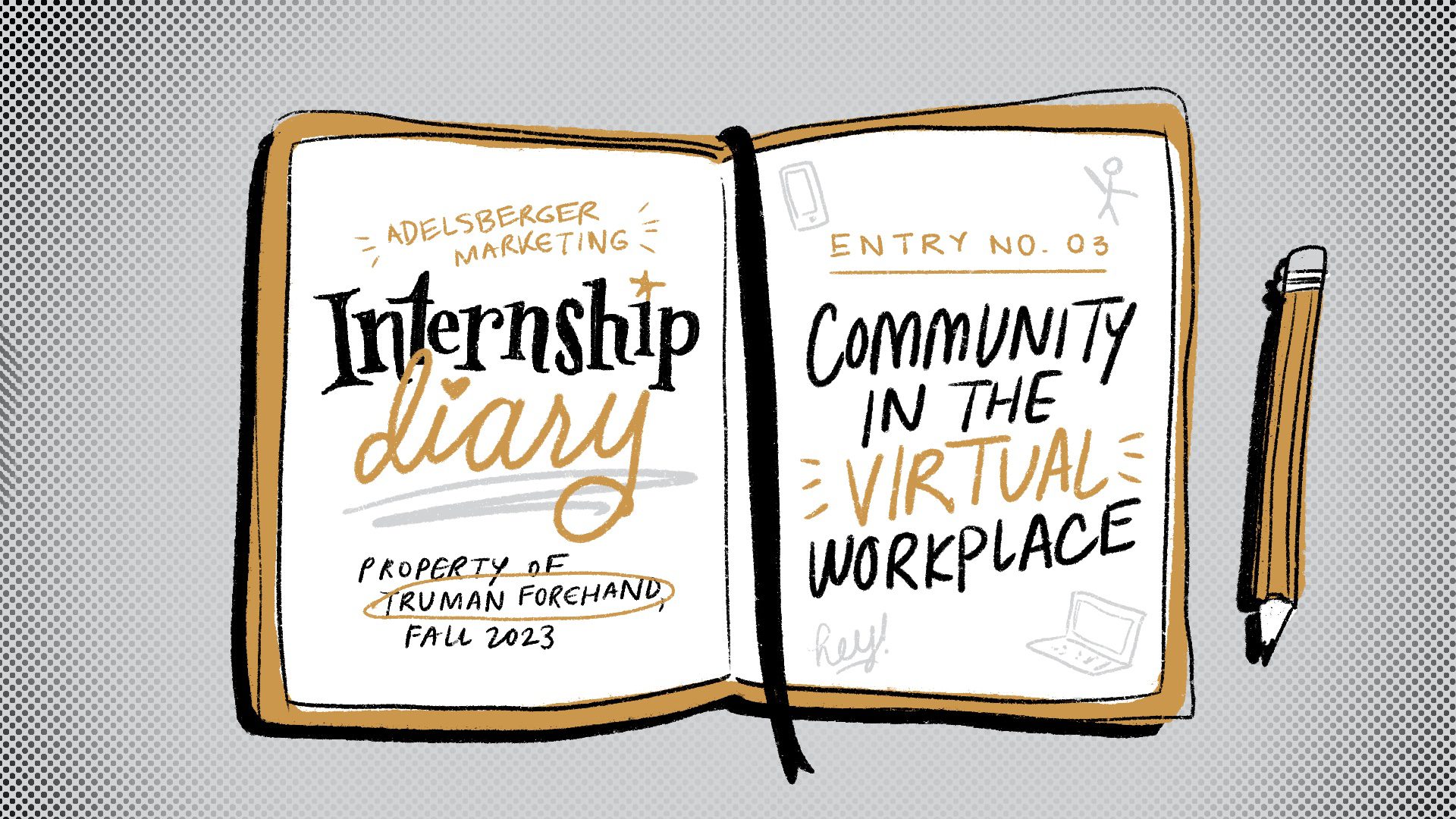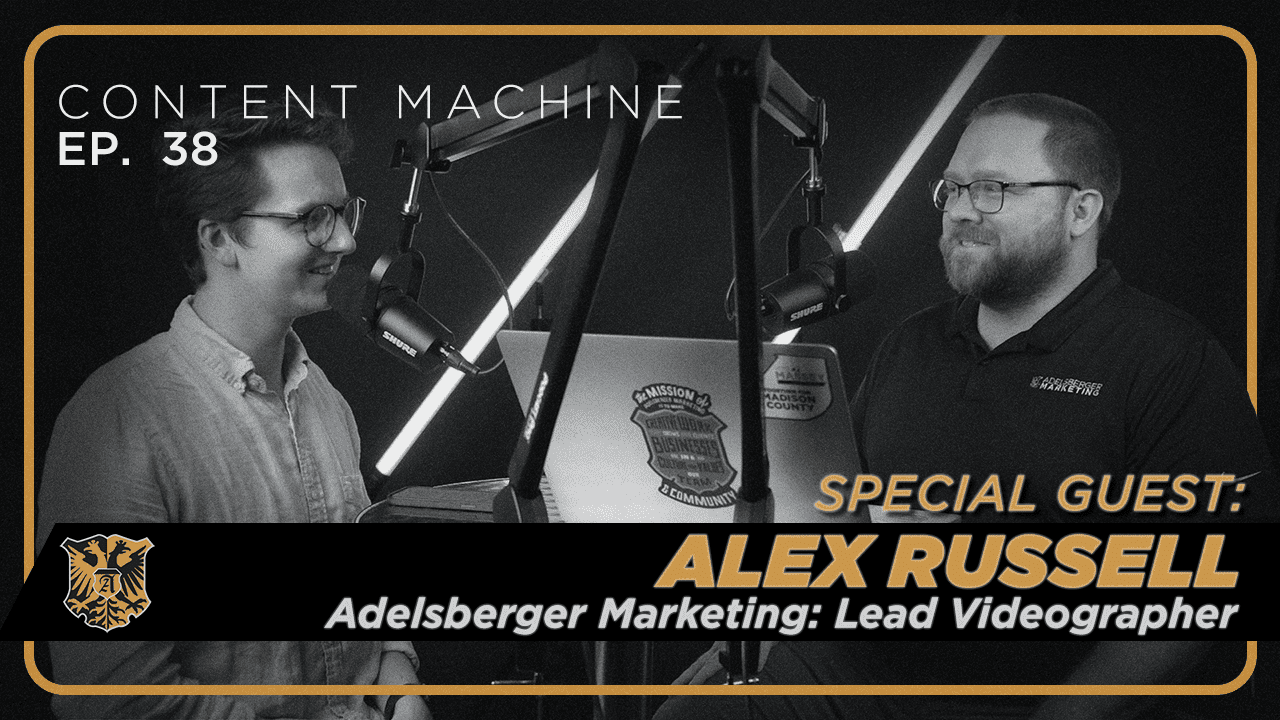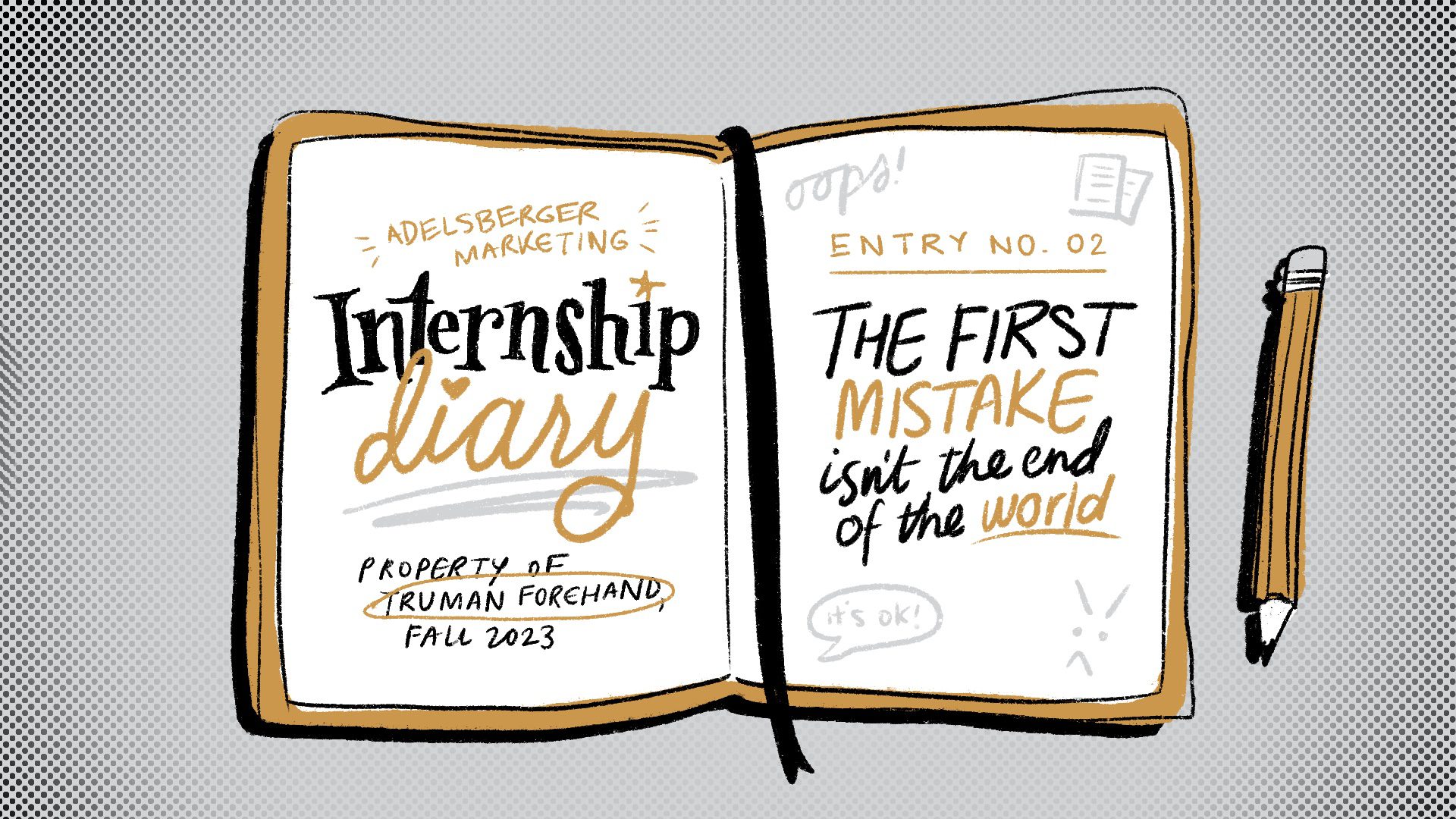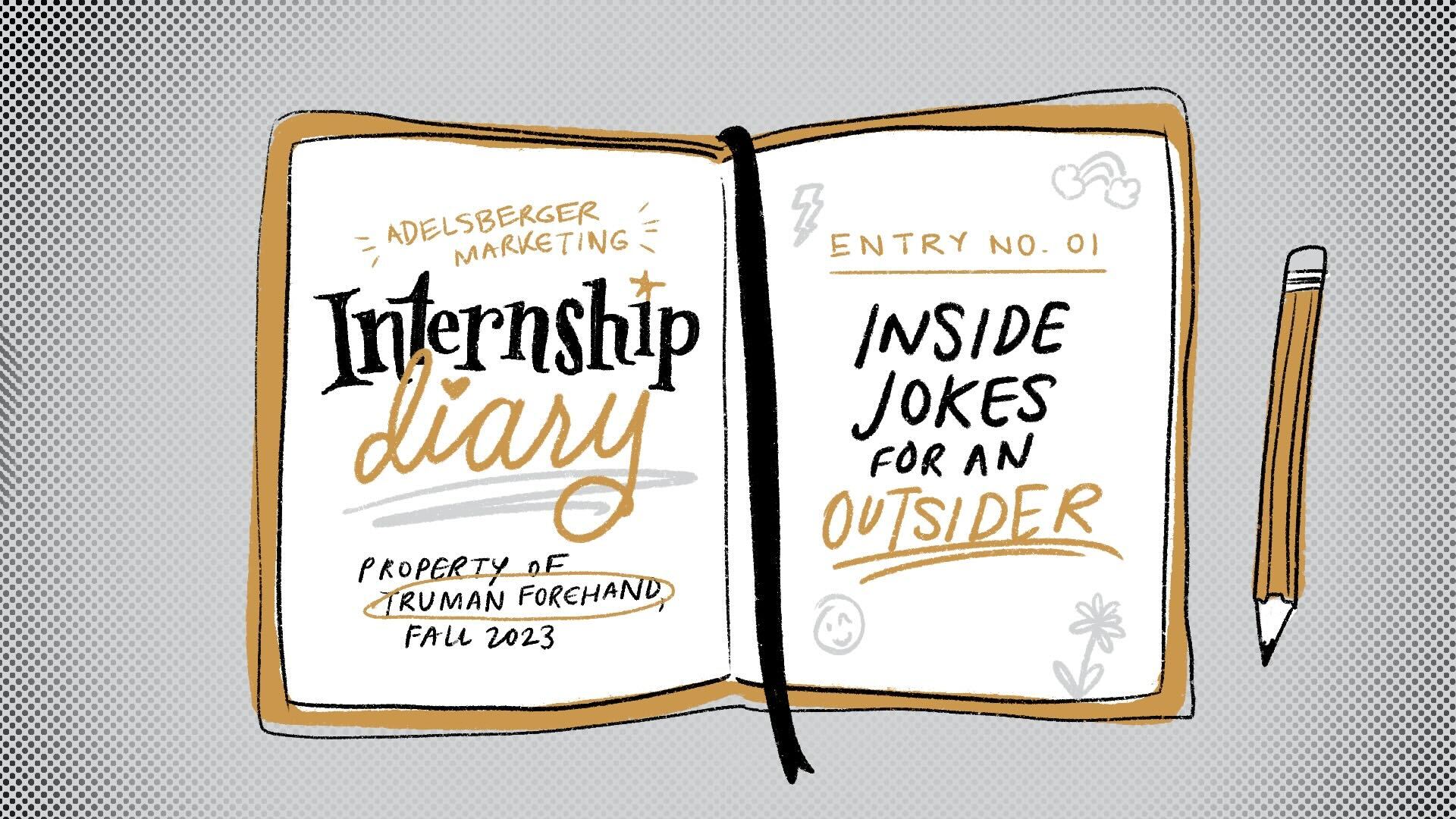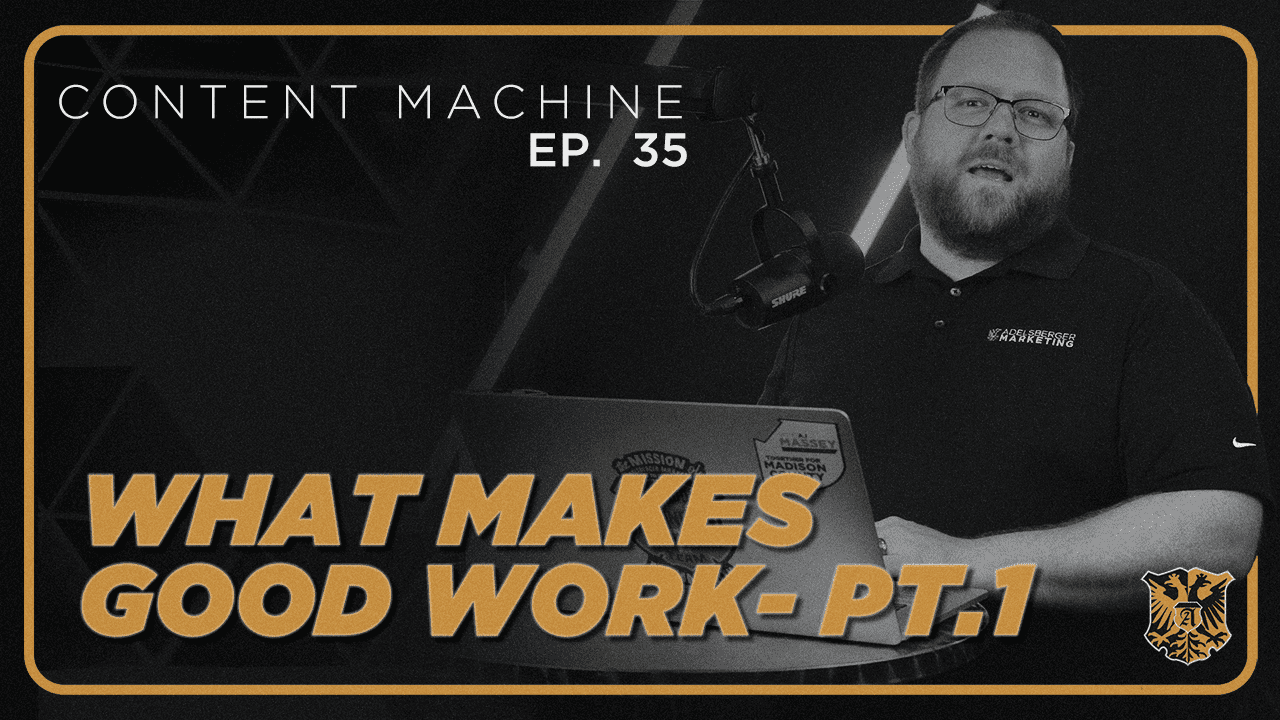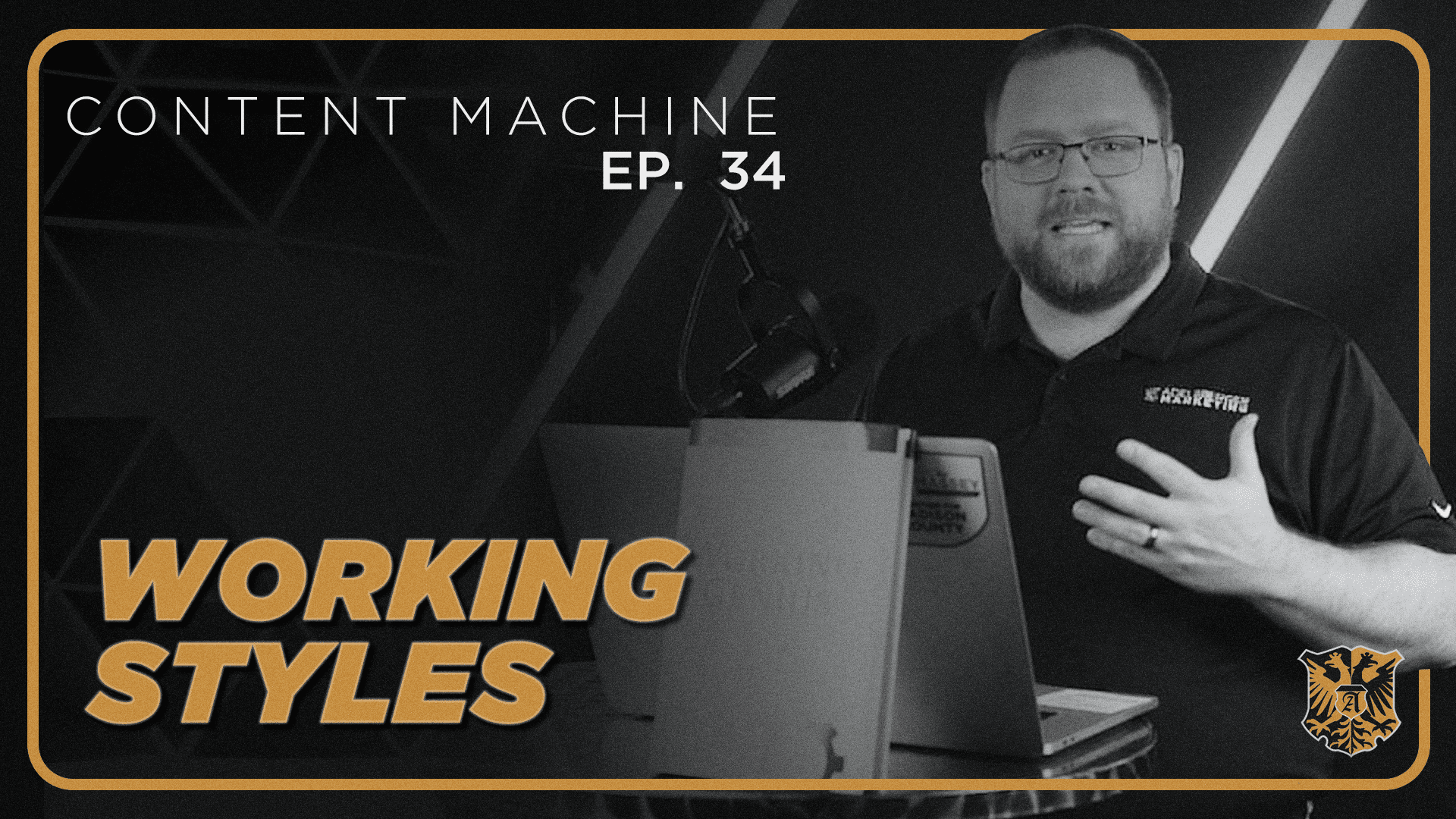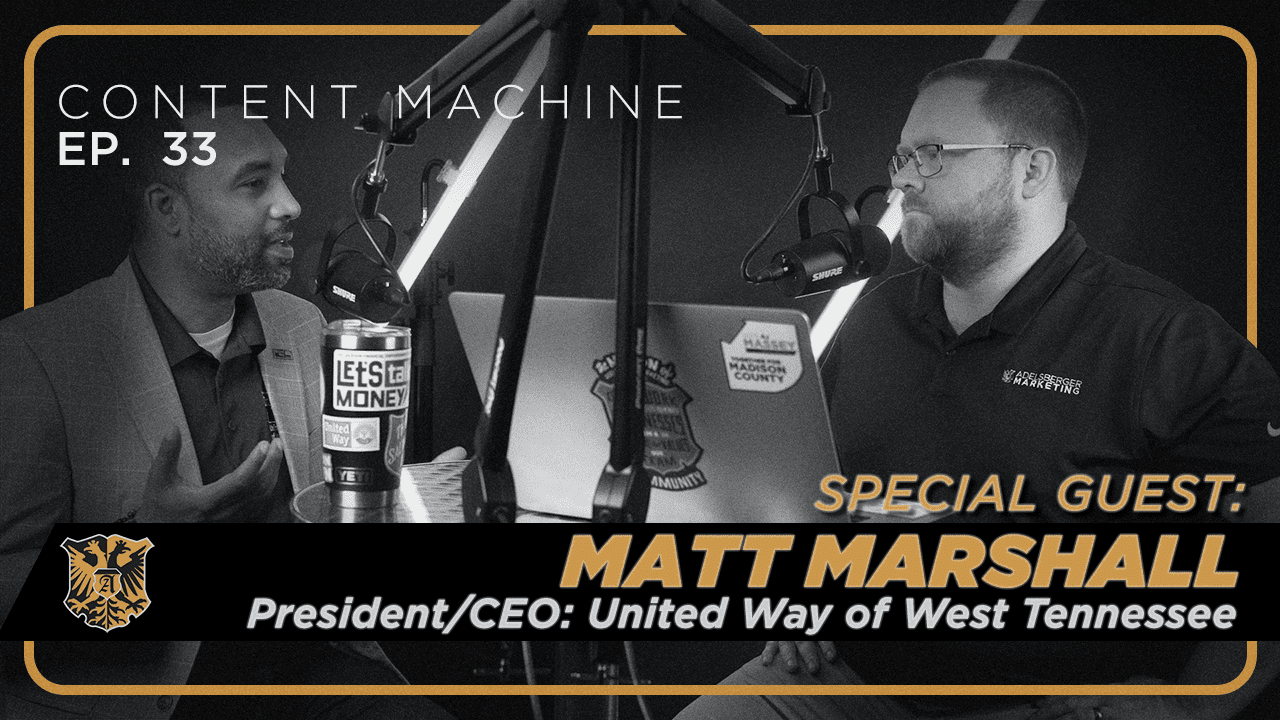Kevin Adelsberger
Welcome to the Content Machine Podcast. This week, I’m joined by one of our own, Alex Russell. Alex, thanks for joining us.
Alex Russell
Thanks for bringing me on. It’s a pleasure to be here.
Kevin Adelsberger
That’s great. I’m glad that you’re excited about it. You’re going to talk about all about video interviews, which is a big part of what you do. Yeah. We lost him folks.
Alex Russell
Yeah.
Kevin Adelsberger
This week, Alex, you’re going to talk to us about how to interview someone for videos, right?
Alex Russell
That’s right.
Kevin Adelsberger
Yeah. Can you tell us about your first interview that you did on Video?
Alex Russell
Yeah. I say I have a rich history. I’m in my late 20s, but I remember my very first interview in a very embarrassing way. Yes, can I help you? Okay, go ahead. Okay, I’ll start right there.
Kevin Adelsberger
This is going to be. Okay.
Alex Russell
Sounds like he’s making fun of me. It’s okay. People can’t take me seriously, so this is my fault. You should have had someone else interview me. Now that you’re about to interview me, I’m just…
Kevin Adelsberger
I need all the tips I could get. Yeah. Tell us about your first interview.
Alex Russell
My first interview was right at the beginning of high school for me. With the accessibility of video and being able to edit, shoot video rising as I was going through high school, I, believe it or not, was part of what they called APUSH, which is Accelerated… I don’t know what it’s called. Ap History, that’s what it was. I had to do a book review about George Washington, and actually by Ron Chernow. Yeah, I didn’t read all of it because it was long. It is very long. I skimmed it, but don’t tell my history teacher. Anyway, we had an option of writing an essay or producing a video as a form of book review, a book assignment to, so that we read the book, what we learned. That was my first dip into it. A lot of cutaways, a lot of talking to myself. I was very proud of myself. I did a very, some would say, a very nuanced special effect.
Kevin Adelsberger
How did you score on the paper? How did you score on the video?
Alex Russell
The video itself, I did really well, yeah. That was-It was encouragement. -it was encouraging for me to be able to do that. But also, I think just that experience of making, because even to date, that was one of my earlier videos that I actually set down to produce. I have wrote a basic script, which most of the interviews I do today aren’t scripted, but, you know. It was the first really structured video that I did. And so it just happened to be an interview with myself, which is totally normal.
Kevin Adelsberger
That’s high school. What about college? Did you do any interviews during college?
Alex Russell
Sure, yeah. I just had some experiences in college where I was able to conduct a few interviews for classes that we did, where we would… It was an assignment at the time, but I was able to conduct interview that if you look at, which I won’t reveal the footage of the high school one because it’s really embarrassing because I’m an awake. But you have it? Yeah, I do have it.
Kevin Adelsberger
Is it at your parents’ house?
Alex Russell
No, it’s on YouTube. I’m sure somebody can find it if they work hard enough.
Kevin Adelsberger
First person to find it. I will give you a $5 Starbucks card. Leave that in the edit, Eric.
Alex Russell
That would be a lot of work for $5 at Starbucks. But you also get to view it, and some would say that’s worth more than anything. In college, a level of experience, I was able to produce this interview with… It was a local artist at the time. For the first time, I was incorporating some significant B-roll, which is just supplementary footage to help push the narrative forward, give some visual examples of what the interviewee is talking about. And so, gained experience from that all the way up to I had a multi-year long internship with a local church media team where we would conduct a lot of testimony videos that they would do within the church setting. And so, which is probably where I learned the most because I was able to, in that setting, this wasn’t like… In student settings, it’s very forgiving if you mess up. The person you’re working with, for example, was also a student, so in some ways it felt very easy-breezy. But for the first time at the church, I was dealing with stories that had a lot of meaning. Not that the interview I did with the artist didn’t, but this one had implications that more impacted people’s lives and serious and heavy. Very personal, yeah. I think that’s where I actually learned a lot about how impactful an interview can be because like I said, both of those prior interviews, although they were fun and they were great for experience, they didn’t really provide me… They didn’t really have that, and some of that was on my part being so novice in it, but it didn’t have that impact that I realized later that interviews can have.
Kevin Adelsberger
Alex, what’s like the first thing that you tell an interviewee when they come into the room?
Alex Russell
What I tell them? I usually, after they get settled, try to make sure there is as comfortable as they can be when they’re in front of the camera. But there’s this… Before I start any interview, there is an anecdote that I commonly go back to, which is, if I were to ask you, this is it, by the way. I’m not continuing what I’m saying. This is the actual, so tune in, this is it. If I were to ask you what color the sky is, and you just said blue, which is a great answer. It could be true. However, what I tell the interviewee is within the editing process, although that answer is true and the answer is good, it sounds very confusing without all the context of what I asked question-wise. So all the people watching the video are going to know is that you said the word blue, which could be anything. It could be- Color of a dog. -color of a dog. It could be the color of your favorite candy.
Kevin Adelsberger
-color of your clues.
Alex Russell
-color of your clues. Yeah. I don’t think we can bring up blues clues. But anyway, yeah, there’s so many blue objects in the world, like who knew that I was talking about this guy. This exercise of, if I ask you what cover this guy is, it’s an opportunity to teach the interviewee how, when they answer a question that’s being asked. It teaches them that adding some context or repeating the question a little bit to add context to their answer can be really helpful when conducting the edit can be really helpful when putting together the edit. It creates that context that without it, can just make it where the answer is not as usable because, like I said, without the context of knowing that I asked what color the sky is, the answer blue doesn’t make a lot of sense. Instead, maybe they could say, This guy is blue, when they answer or providing some of that context.
Kevin Adelsberger
That could make an entire interview be very different for editing purposes. It could go from a useless interview to a very useful interview.
Alex Russell
Right. Because without it, you could totally lose that answer. You totally just have no use for it. And especially when people are starting to answer a question, sometimes they say some really good stuff at the beginning. It’s just such a great sadness whenever that answer is just not- Usable later. -useable without that context. Yeah.
Kevin Adelsberger
It’s hard to hear that in the moment, too, because you might think you got this awesome answer because you heard the context and then you go watch it out of context. You’re like, Oh, I can’t do anything with this. Right.
Alex Russell
Which is great for comedy, but not great for —
Kevin Adelsberger
Not great for editing videos. What are some do and do nots of interviews?
Alex Russell
One of the do’s that I stick to pretty commonly is how I try to make sure the guest is as comfortable as possible, encouraging them, really, because you have to realize most people in their lives, sometimes even some might do it just semi-regularly, but often times this might be their first time on camera, first time doing interview. And so, naturally, you’re going to be, if you were the one being interviewed, you’re going to be pretty uncomfortable. You’re going to be under the lights, and that pressure is really going to start getting to your head. One of the things I encourage them with is, thankfully, they don’t have to look at the camera when it comes to interview. They look at me. Oftentimes, that creates a more natural conversation feel.
Kevin Adelsberger
Yeah, because they feel like they’re talking to you and not talking to a camera.
Alex Russell
Right. Which talking to the camera can be very whole black hole experience of Am I actually talking to somebody? How do I look? It can be very disorienting. It also keeps the eye contact from being directly into the lens, which when you watch a video that someone’s… When you’re watching a video where someone has been looking directly in the lens, you’ll get this effect where they’re almost talking directly toward you, which is great for some videos, but for a lot of interviews, you want to be like, I’m catching this interview from a bystander perspective. Got you. Yeah.
Kevin Adelsberger
Then do you go in with a script for interviews?
Alex Russell
In the hopes of being more of an authentic experience, the interviews themselves are not too scripted to a T. Usually, there’s outlines to add some direction. Sometimes I’ll even share that with the interviewee just to give them some comfort of where we’re going, how many questions they’re going to be, because once you start, sometimes they could be like, How long is this going to be like? I don’t want to be here for another hour. They can keep up with the direction of the interview. There’s generally a rough outline, but as far as a full script goes, it’s very bare bones because we want it to, again, that conversational aspect of the interview. We don’t want it to control the narrative at all. We don’t want to make it so that the person feels like they have to say certain thing and being willing to follow the interviewee if it’s appropriate, if it’s not too much of a tangent, because then there’s so much you can prepare for an interview. But if the interviewee surprises you, you might end up in a more unique perspective that you just even-
Kevin Adelsberger
Yeah, you wouldn’t even know I was there.
Alex Russell
Yeah, not at all. That’s something that’s always important to do, is just be ready to be loosey, goosey, creative. Don’t get too strict on it.
Kevin Adelsberger
Yeah, you can go off book. Are you saying if you see a path that’s maybe off the question you’d planned because they’ve said something, that could be a great opportunity to get another piece of insight that you hadn’t planned on.
Alex Russell
Yeah, absolutely.
Kevin Adelsberger
Is there anything we should avoid when we’re doing interviews?
Alex Russell
Yes.
Kevin Adelsberger
Great. Well, that’s been the Content Machine Podcast. Is there anything we shouldn’t do when we’re recording an interview?
Alex Russell
Absolutely, yeah. There’s numerous things. Some things that come to mind, though, is to, I mentioned earlier, definitely don’t want to manipulate someone’s answer, but don’t be afraid if someone needs help finding out what they want to say. I think there’s some fear of that layer like you’re talking with them a little bit off to the side of an interview of like you’re working through a question that you just asked them and they just seem so lost, which happens because again, there’s that pressure and you want to make them feel comfortable. And so sometimes some people need some of that direction where, of course, you want to preface it with, I don’t want to force you to say this, but see if you can figure out what direction they might be trying to go in to encourage them to be like, Okay, you can go that direction. Go down that avenue of answering the question that way, if that’s what’s true to them. I think because so much, if you’re just throwing questions at them and they’re just like, I have no idea, it’s not very helpful to just keep their own questions and then just already in an uncomfortable situation, they’re feeling like, Oh, I can’t answer these. I need a lifeline. So being that lifeline is something that you want to make sure you’re not straying away from, even as the interviewer. My other don’t is something that it’s a personal problem for me. I have the tendency to, especially when I meet a new person, even something as small as a waiter or waitress, I want to create this small talk atmosphere that makes them feel like, Okay, I can talk here. We’re having a casual conversation. But don’t ask them too many questions that are off topic, right? There’s some time at the beginning to do that as they’re walking in, you’re having small talk. But while it’s good to be creative and take, not tangents, but follow their direction as they’re talking, right? You don’t want to end up somewhere where you’re talking about something totally different, even for the sake of being a conversationalist or just being a nice and cheery person of wanting to have a conversation with them, don’t let that. There’s some professionalism there where it’s important to make sure that the interview is not becoming so casual that you miss the point of the whole interview. That’s something that you have to really reel it in sometimes, even if your natural tendency is to not —
Kevin Adelsberger
Just keep talking.
Alex Russell
Yeah, keep talking.
Kevin Adelsberger
Well, let’s say you get that really good interview. What’s the value of one of those really good interviews?
Alex Russell
The impact of a good conducted interview has the result of offering this unique perspective, whether it’s for you could be interviewing for a company, for their website, maybe it’s for a program that they’ve started. Maybe they’re just talking about what it’s like to work for this company or this nonprofit in a way that you can’t really get across personally as a bullet list of facts of like, We treat our coworkers like this. We have this percentage. Those are great for understanding purposes, but to hear it come from a person directly from them, from their experience means so much because we, as people, we relate to that. We relate to experience.

